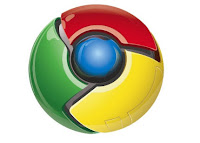If you have been using internet for some time now, I am sure that you would have faced some kind of a connectivity issue in your computer. One fine morning you switch it ON and try to browse through your favorite websites in your browser, only to see the "Page cannot be displayed" error on the browser. Otherwise your browser will take its own time to show you a simple website like Google. This problem may occur due to various reasons starting from network card issues to some cargo ship scraping over the underwater cable that brings the Internet link to your country.
However most of the time it is just a DNS server issue which can be solved very easily by yourself. Before taking you through the steps, let me explain what a DNS server is.
DNS Server
Every network device in the Internet like your Laptop, Servers, Routers, etc., have to identify itself with a unique address called IP address. You have to use these IP addresses to access or identify a device on the Internet. Sometimes remembering these IP addresses can be very tiring particularly when it comes to remembering the address of a webpage. To make things easier, names like www.microsoft.com or www.google.com are used to represent an IP address of a website.
DNS Server
Every network device in the Internet like your Laptop, Servers, Routers, etc., have to identify itself with a unique address called IP address. You have to use these IP addresses to access or identify a device on the Internet. Sometimes remembering these IP addresses can be very tiring particularly when it comes to remembering the address of a webpage. To make things easier, names like www.microsoft.com or www.google.com are used to represent an IP address of a website.
In Windows 95 and 98, these names would get stored in your laptop or desktop, so that when you type www.google.com in your browser, it will replace the IP address of Google's web server and try to connect to it. Later this process of storing or caching the web addresses was shifted to distributed servers called DNS (Domain Name Service) servers. Now whenever you type a web address in your browser, a query is made to the DNS server and an IP address is fetched. If your computer cannot contact the DNS server or if your DNS server does not have the web address you typed cached in its database and could not find a website's IP address within the timeout period, you will get a "Page cannot be found" error.
So how will your computer know the IP address of a DNS server which is somewhere in the cloud. It would make a query to another server called DHCP server in your network to find the IP address of the DNS server. If you have a broadband connection in your home or office, your ADSL modem does the job of a DHCP server as well as the DNS server. So your computer will be using this DNS server most of the time to translate the Web addresses. But your modem does not always have enough buffer to hold and serve you with a web address you request. When you make a request for an address that your server does not have, a request is made to a DNS server which is above it - a server maintained by your ISP. So it is always a better idea to use a faster DNS server either from your ISP or from a Public DNS service provider to get your web pages found and loaded quicker.
Changing DNS Settings
Follow the steps given below to manually enter a DNS server address in your Windows PC.
1. Click Start button and then press Run.(Windows Key + R)
2. Type control netconnections and click OK. A window called Network Connections will open now.
3. Right Click the Network connection you use to connect to the Internet (eg. Wireless Network Connection or Local Area Connection.) and click Properties
4. Click the Internet Protocol version 4(TCP/IP) and click Properties.
5. In the TCP/IP properties dialog box, select 'Use the following DNS server Address'.
6. You can type two DNS server addresses in the boxes below it.
7. Type any of the DNS servers' address I have given below and click OK to the dialog boxes that are open to save the settings. I would recommend the Public DNS server address which are more reliable and faster.
List of DNS servers of the ISPs in India.
If you use Airtel Broadband Connection use any of the following DNS servers.
202.56.215.6
202.56.230.6
203.145.184.32
203.145.184.13
202.56.250.5
202.56.250.5
For BSNL use the following.
61.0.0.5
61.1.96.69
218.248.255.147
218.248.255.146
For Tata Indicom
203.197.12.30
203.197.12.42
For Reliance
220.225.236.84
List of Public DNS Servers.
List of Public DNS Servers.
Apart from using the above IP addresses you can always use the Public DNS servers given below irrespective of your Broadband connection.
Google
8.8.8.8
8.8.4.4
8.8.8.8
8.8.4.4
Cisco
64.102.255.44
Level 3 Communications
4.2.2.1
4.2.2.2
4.2.2.3
4.2.2.4
4.2.2.5
4.2.2.6
4.2.2.3
4.2.2.4
4.2.2.5
4.2.2.6
Verizon
151.197.0.38
151.197.0.39
151.202.0.84
151.202.0.85
151.202.0.85
151.203.0.84
151.203.0.85
199.45.32.37
199.45.32.38
199.45.32.40
199.45.32.43
151.197.0.39
151.202.0.84
151.202.0.85
151.202.0.85
151.203.0.84
151.203.0.85
199.45.32.37
199.45.32.38
199.45.32.40
199.45.32.43
GTE
192.76.85.133
206.124.64.1
One Connect IP
67.138.54.100
OpenDNS
208.67.222.222
208.67.220.220
208.67.220.220
Exetel
220.233.167.31
VRx Network Services
199.166.31.3
SpeakEasy
66.93.87.2
216.231.41.2
216.254.95.2
64.81.45.2
64.81.111.2
64.81.127.2
64.81.79.2
64.81.159.2
66.92.64.2
66.92.224.2
66.92.159.2
64.81.79.2
64.81.159.2
64.81.127.2
64.81.45.2
216.27.175.2
66.92.159.2
66.93.87.2
216.231.41.2
216.254.95.2
64.81.45.2
64.81.111.2
64.81.127.2
64.81.79.2
64.81.159.2
66.92.64.2
66.92.224.2
66.92.159.2
64.81.79.2
64.81.159.2
64.81.127.2
64.81.45.2
216.27.175.2
66.92.159.2
66.93.87.2
Sprintlink
199.2.252.10
204.97.212.10
204.117.214.10
204.97.212.10
204.117.214.10






















